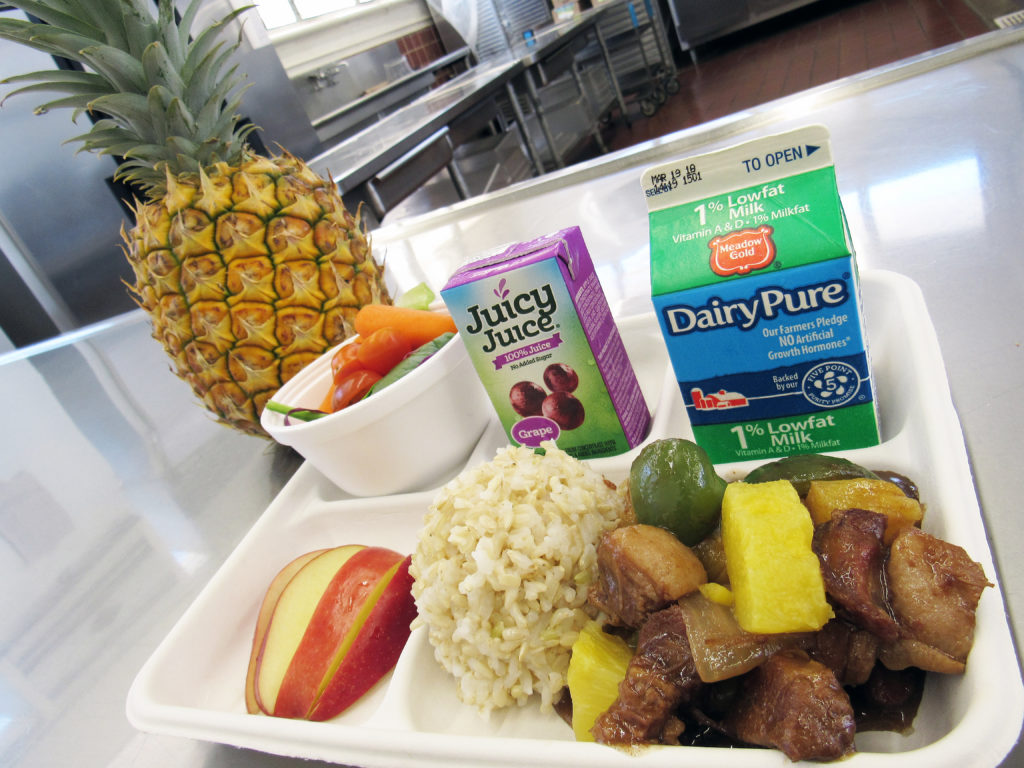Rate increase will bring in $8 million per year to feed Hawaiʻi’s keiki

The US Department of Agriculture this week announced that Hawaiʻi’s reimbursement rates for school lunch and other federal child nutrition programs will be increased by 13%.
These increased rates are projected to bring an additional $8 million a year to Hawaiʻi to support healthy meals for children. Hawaiʻi schools, child care, afterschool, and summer programs provide meals and snacks to more than 100,000 children, which are reimbursed by the federal government at a per-meal rate, set by the USDA.
This rate increase for Hawaiʻi is attributed to the culmination of years of work by local anti-hunger organizations and child advocacy groups. Hawaiʻi Appleseed, Hawaʻi Children’s Action Network, Ulupono Initiative, and the Hawaiʻi Afterschool Alliance teamed together for a major push in May 2022, with the release of the “Feed Our Keiki” report, which showed that the federal reimbursement rates didn’t come close to matching the current cost of providing school meals in Hawaiʻi.
Equipped with the report’s findings, Hawaiʻi’s congressional delegation took swift action on behalf of Hawaiʻi’s schools. In response to the “Feeding Our Keiki” report, they jointly called upon the USDA to cover the “full, accurate cost of school meals” in the state and then passed a provision in the federal government funding bill that directed USDA to make the increase.
In December 2022 President Joe Biden signed the funding bill into law, which—for the first time in more than 40 years—provided funding to increase the reimbursement rates for Hawaiʻi and other outlying areas beyond regular inflation adjustments. As a result, starting in July 2023, Hawaiʻi’s reimbursement rates will rise from the current 17% to 30% over the continental US rates.
“We have been trying to get this increase for over a decade,” said Daniela Spoto, director of anti-hunger initiatives at Hawaiʻi Appleseed in a news release. “Hawaiʻi’s reimbursement rate was far too low to be able to operate these programs effectively, and it has been negatively affecting our ability to serve quality meals to children. We are incredibly excited for what this means for improving access to and quality of Hawaiʻi’s school meals.”
The new funding will be applied to all child meal programs in the state, which include the National School Lunch Program, the School Breakfast Program, the Child and Adult Care Food Program and the Summer Food Service Program.
“This increase will also help after school and summer programs provide meals for our kids and youth, ensuring that they have access to food outside of school time,” said Paula Adams, Executive Director of the Hawaiʻi Afterschool Alliance.
The adjustment will be in place until the USDA completes the second phase of its School Nutrition Cost Study, which will determine a longer-term school meals reimbursement for the outlying areas, including Hawaiʻi. The study results are projected for 2027.
Legislation that passed in 2021 requires the Hawaiʻi Department of Education to increase local food sourcing for student meals.
Inadequate federal reimbursements short-change the entire community because a portion of those funds could benefit Hawaiʻi’s food producers, according to organization leaders.
“We hope that the Hawaiʻi DOE spends a portion of this $8 million in federal funding for purchases of locally grown fruits, vegetables, starches and protein from Hawaiʻi’s local farmers and ranchers,” said Jesse Cooke, Ulupono Initiative’s Vice President of Investments and Analytics. “This additional funding can provide a better quality of food for our students, and will help the Hawaiʻi DOE make progress towards its legislatively mandated goal of 30% locally-sourced meals by 2030.”









